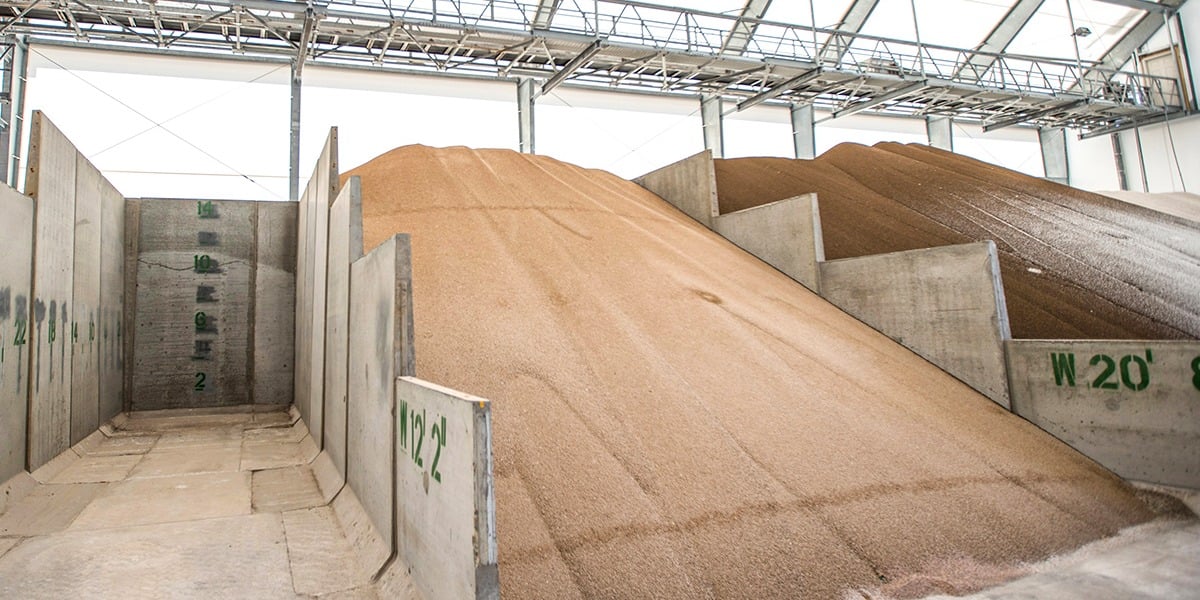Fertilizer Storage - Fabric vs. Steel and Wood Structures

You are what you eat! Food is vital to humanity - and fertilizer is vital to growing the world's food. Keeping a ready supply of fertilizer on hand requires a space to store it.
High volume fertilizer storage requires large, well-ventilated, dry space. But that opens a wide range of options: wood structures, steel structures, fabric structures. How do they compare?
|
Fabric |
Wood |
Steel |
|
| Clear Span Design |
Yes |
No |
No |
| Naturally Bright Interior |
Yes |
No |
No |
| Available for Relocation |
Yes |
No |
No |
| Quick Installation |
Yes |
No |
No |
| Low Project Costs |
Yes |
No |
No |
| Maintenance-Free |
Yes |
No |
No |
| Foundation Options |
Yes |
No |
No |
Here are some other options to consider when comparing fabric vs steel buildings for fertilizer storage.
Fertilizer Storage Building Warranty
Non-corrosive fabric buildings carry a warranty when used for fertilizer storage. Steel buildings, which corrode when exposed to fertilizer and chemicals, typically do not.
How Long Does a Fertilizer Storage Building Last?
The longevity of a fertilizer storage building will depend on the type of building material used. Fabric buildings are not susceptible to corrosion, which is a common source of failure in steel fertilizer buildings.
Legacy's fabric buildings are assembled with individual fabric roof panels that are welded together. The roof is created without any penetrations that can cause leaks later on. With this permanent attachment, fabric buildings require less maintenance over the lifespan of the building.
Superior Environment for Fertilizer Storage
Fabric buildings are known for having a bright, airy interior. The translucency of the fabric allows natural light into the building, saving on lighting costs and creating a more pleasant environment for workers inside the structure.
Another benefit of fabric is that it is climate-responsive, better able to maintain a consistent interior temperature. This helps the building feel cooler in the summer and warmer in winter. A variety of active and passive ventilation options keep a supply of fresh air circulating throughout the building.
As business operations change, fabric buildings can be reconfigured. With Legacy's fabric attachment system, the cladding may be rolled up and re-installed in a new location without loss of quality.
Contact Legacy for Your Fertilizer Storage Needs
Our experienced team will focus on understanding your needs and your fabric building project requirements. We will work closely with you and your project team to refine the specifications, providing you with innovative solutions. Our focus is to provide customers with the ultimate value for the application necessary.
Legacy Building Solutions sincerely strives to meet or exceed customer expectations. Contact us to get started.
Frequently Asked Questions
Fertilizer requires a large, dry, and well-ventilated space to maintain quality and safety. Choosing the right building type—fabric, wood, or steel—directly impacts storage efficiency, long-term costs, and building performance.
Fabric buildings outperform wood and steel in several key areas:
-
Clear span design – Open space with no interior columns.
-
Naturally bright interior – Reduces lighting costs and improves working conditions.
-
Relocation options – Can be moved or reconfigured as business needs change.
-
Fast installation – Rapid build times mean quicker use.
-
Lower project costs – More affordable up front and over time.
-
Maintenance-free – Non-corrosive, no rust, fewer repairs.
-
Foundation flexibility – Multiple options available, unlike wood or steel.
Longevity depends on the material:
-
Fabric buildings resist corrosion, making them longer lasting and easier to maintain. Legacy fabric roofs are made from welded panels with no penetrations, which reduces leaks and maintenance over time.
-
Steel buildings are prone to corrosion from fertilizer exposure, which often shortens their lifespan.
Fabric buildings create a bright, airy interior with natural light, which saves on electricity and boosts worker comfort. The fabric is also climate-responsive, helping keep interiors cooler in summer and warmer in winter. With active or passive ventilation options, airflow remains consistent and safe for both workers and stored materials.
Legacy’s team works closely with you to understand your operational requirements and tailor a storage solution that delivers long-term value. From design through installation, our goal is to provide innovative, durable, and cost-effective fertilizer storage buildings that exceed expectations.
Subscribe to our Blog
Recent Posts
- Climate Resilience in Commercial Construction: Why Traditional Methods May Not Be Enough
- Speed and Quality: The Role of Hybrid Building Materials
- Beyond the Bleachers: Designing Visually Striking Sports Facilities
- Why Architects Prefer Hybrid Steel Over PEMBs & Traditional Builds
- Building Innovations and Trends in the Mining Industry
